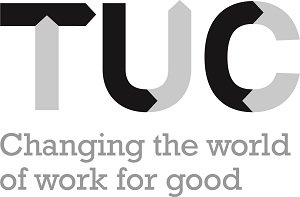‘Generational pay gap’ has increased by half in last 20 years, warns TUC
- The pay gap between under-30s and over-30s is now 21.9%, compared to 14.5% in 1998.
- TUC launches digital platform to help young workers get into unions as it marks its 150th anniversary
The pay gap between young and older workers has increased by more than half in the last 20 years, according to a new report published today (Monday) to mark the 150th anniversary of the TUC.
The report shows that in 1998 the pay gap between over 30s and under 30s was 14.5% (£1.51 an hour in 2017 prices). However, in 2017 it had widened to 21.9% (£2.81 an hour).
The generational pay gap has increased in real terms from £3,140 in 1998 to £5,884 in 2017 for someone working a 40 hour week. It has grown by £2,744 over the last two decades.
Low-paid sectors
To mark its 150th anniversary, the TUC is highlighting the challenges young people today face in the world of work, including low pay, insecurity and lack of progression.
The report reveals that young workers are increasingly likely to be concentrated in low-paid, low-skilled sectors, with few opportunities for progression
More than a third (36.1%) of under-30s are currently work in caring, sales or elementary occupations, compared to just over a quarter (25.8%) of over-30s.
The number of 21-30 year-olds working in low-paid industries like private social care (+104%) and hotels and restaurants (+80%) has shot up since 1998, even though today’s young workers are the most qualified generation ever.
Lack of career progression
Today’s report also features new polling of young workers which shows:
- Just 3 in 10 (31%) have felt that their current job makes the most of their experience and qualifications.
- 4 in 10 (38%) have had few or no training opportunities in the last year
- 1 in 5 (21%) have worked on a zero-hours contract in the last 5 years
- Nearly a quarter (23%) have struggled to earn enough to pay basic living costs, and 1 in 5 have skipped a main meal to make ends meet in the last year.
- Because of concerns about finances: 22% have put off starting a family and 41% have put off buying or moving home.
Digital trade unionism
In response to falling union membership among young people, the TUC has today launched a pilot version of a new app – WorkSmart – that helps young people to progress at work, build relationships with co-workers, and learn about their rights.
The project has been in development for two years, and aims to develop a model of trade unionism better-suited to a new generation of workers. 1,000 young workers have already signed up.
TUC General Secretary Frances O’Grady said:
“We’re creating a lost generation of younger workers. Too many young people are stuck in low-paid, insecure jobs, with little opportunity to get on in life.
“This is the most qualified group of workers ever. But huge numbers of hardworking young people are struggling to meet basic living costs – and many more can’t afford a home of their own or are putting off having children.
“150 years on from the founding of the TUC, joining together in a trade union is still the best way to get a better deal at work. But unions need to reach out to the young workers in workplaces where there isn’t a union.
“That’s why today we’ve launched a new pilot, WorkSmart – to find a way to get the benefits of trade unions to the young workers who need us most.”
ENDS
Notes to editors:
- A full copy of the report is available here
- WorkSmart, the TUC’s new app for young workers, will go live at https://www.getworksmart.co.uk/
The age pay gap: 21-30 vs 31-64-year-old employees (real 1998 wages)
|
1998 (21-30) real pay |
1998 (31-64) real pay |
pay gap 1998 (check) |
2017 (21-30) |
2017 (31-64) |
Pay gap 2017 |
|
|
UK |
£8.93 |
£10.44 |
14.5% |
£10.00 |
£12.81 |
21.9% |
Source: LFS whole year average, median pay. 1998 pay expressed in 2017 values (CPI deflator)
Percentage in elementary, sales, caring and leisure occupations
|
|
Elementary, sales, caring and leisure |
|
Total 21-30 |
36.1 |
|
Total 31-64 |
25.8 |
Source: LFS autumn quarter 2017
Key growth industries for 21 to 30-year-old employees by industry 1998 to 2017
|
1998 (000s) |
2017 (000s) |
Growth in employees (000s) |
Per cent growth in employees |
|
|
Health and social care (private sector) |
209 |
428 |
+199 |
+104.8 |
|
Health and social work (public sector) |
288 |
384 |
+96 |
+33.3 |
|
Hotels and restaurants |
292 |
527 |
+235 |
+80.5 |
|
Wholesale and retail |
957 |
1,064 |
+107 |
+11.2 |
Source: Labour Force survey autumn quarters 2017
- YouGov polled 1507 young adults (18-30). Fieldwork was undertaken between 3 and 10 May 2018. The survey was carried out online.
- LFS figures: TUC research, using the UK Data Archive.
- The Trades Union Congress (TUC) exists to make the working world a better place for everyone. We bring together more than 5.5 million working people who make up our 49 member unions. We support unions to grow and thrive, and we stand up for everyone who works for a living.
Stay Updated
Want to hear about our latest news and blogs?
Sign up now to get it straight to your inbox
